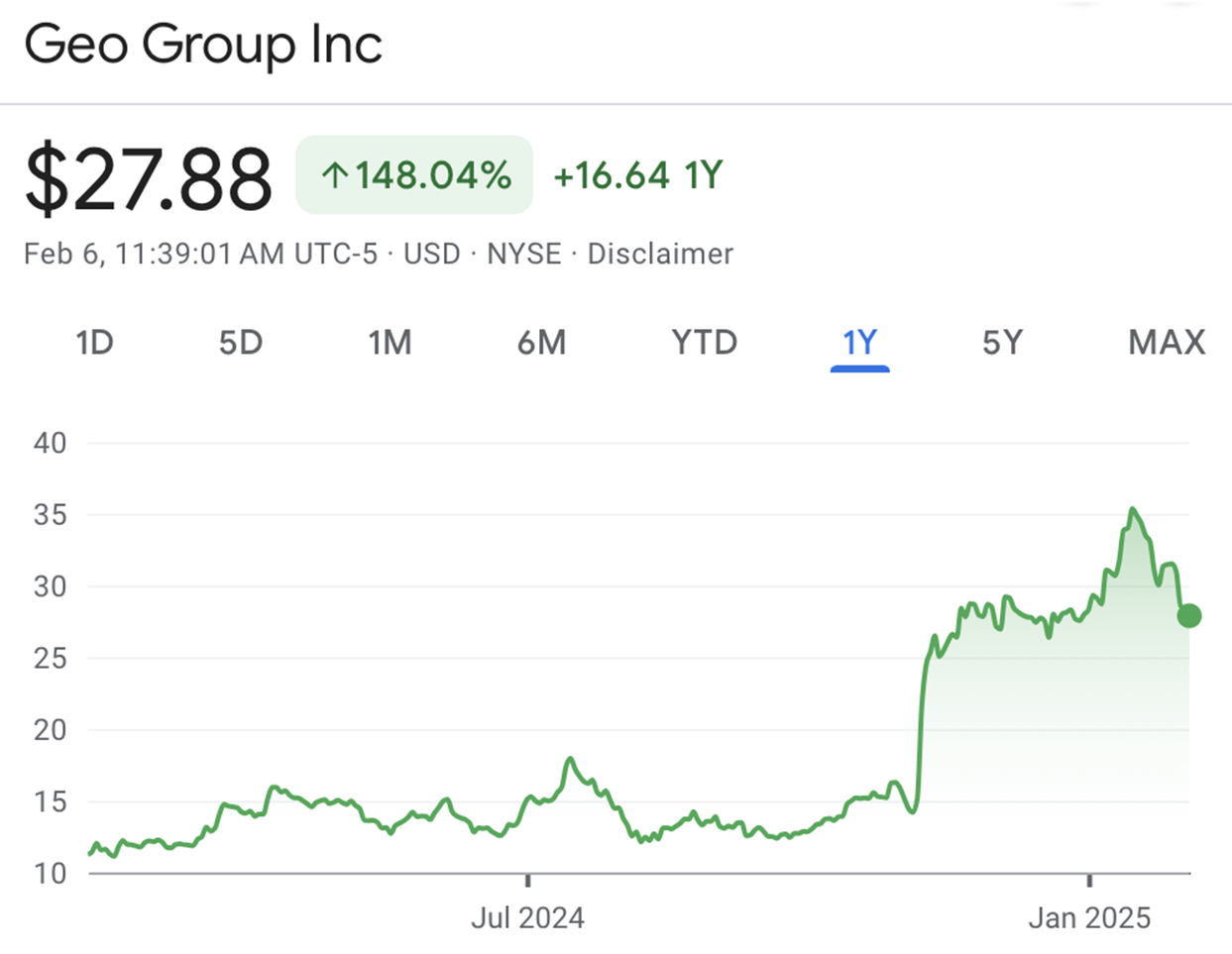The Hidden History of Trans Health Care
As of Saturday, the Centers for Disease Control and Prevention website has scrubbed allmention of LGBTQ folks. The State Department has removed the “TQ” in LGBTQ from its guidance page for LGBTQ international travelers. The White House removed pages honoring Nex Benedict and Matthew Shepard. The CDC also issued an order to rescind and rewrite unpublished research papers by their scientists that include the word “transgender.” (Not to mention curtailing information on climate and vaccines.)
The scrubbing effort has been equated by journalists and internet commentators to a virtual book-burning reminiscent of the Nazi era, specifically the world’s first trans clinic, The Institute for Sexual Research. “A generation of knowledge is being trashed at lightning speed,” wrote Dan Samorodnitsky for Sequencer.
That lightning-speed flurry of executive orders evokes history even as Trump attempts to erase it. In his recent order banning gender-affirming care for minors and 18-year-olds, Trump calls transgender medical care a “dangerous trend” and a “stain on our Nation’s history.”
There is acommon, ironic, and false justification for restricting transgender health care for youth: that it is “new” and “experimental.” Jules Gill-Peterson, historian of transgender medical care and an associate professor of history at Johns Hopkins University in Maryland, spoke with Mother Jones about how old gender-affirming medical care is—more than a century—and how that history informs the attacks we see today.
How far back in history does medical transition actually go?
Medical transition has a surprisingly long-lived history. It begins with surgical practices that, in different places of the world, historians have actually traced back centuries, if not thousands of years—in some cases where you find people obtaining historically appropriate forms of surgery that very obviously had a kind of transition importance, or a gender-affirming importance. But the modern gender-affirming care, transgender health care, that we’re most familiar with really has an early-20th-century history. It comes into being in the 1910s, 1920s, and 30s, around 100 years ago.
How did medical transition become part of the health system in the United States?
The United States was a little slow to build out a larger system. It’s really in the 1950s that we start to see the development of a standard medical protocol for the diagnosis at the time of what was called transsexuality. It was the formation of a procedure. It’s in 1960s that we see the emergence of what was called a gender clinic system at university medical schools all over the country, most famously at Johns Hopkins Hospital.
“Transgender medicine is probably one of the most conservative and deeply regulated fields of health care practice.”
These clinics had multidisciplinary staff, psychiatrists, endocrinologists, social workers, plastic surgeons, all working together as a team that really established not just the medical protocol, but the diagnostic assessments and the standards of care—what went on to be codified as the the World Professional Association for Transgender Health Standards of Care. [That]very quickly gave way, as you might imagine in the United States, to a much broader private market. By the end of the 1960s, into the 1970s, there were clinics all over the country providing transgender health care. By the ’70s, it’s completely nationwide.
Americans, of course, were quite familiar with the idea of medical transition as far back as 1952, when Christine Jorgensen, became a worldwide celebrity.

Christine Jorgensen became the first American transgender woman to attain fame for having sex reassignment surgery. The WWII veteran is pictured on the S. S. United States in 1954.Fred Morgan/NY Daily News Archive/Getty Images
Even though the health system has provided care for trans people, it hasn’t always been an ally. You’ve said that transgender medicine was designed to allow as few people as possible to transition—can you speak more on that?
I think this is a really important point, in part because one of today’s primary political accusations justifying restrictions on medical transition is that doctors are somehow too liberal and freewheeling. There is an idea that anything goes and anyone can access any kind of hormones or surgical procedures, basically on a whim, and there’s almost no assessment or roadblocks preventing people from accessing them. That is such an ironic statement, because transgender medicine is probably one of the most conservative and deeply regulated fields of health care practice. That was true at its founding, and in many ways, it has actually only gotten more restrictive and more difficult to access over the decades.
“It was really the role of psychiatrists and psychologists to run interference.”
This university gender clinic system was really designed to make access to surgery, especially, as difficult as possible to obtain. Psychiatrists were enlisted to basically coerce patients into fulfilling what used to be called the “real life test.” The test was supposed to prove that you were really the person you said you were, a man or a woman. You would have to go out and live full time as your gender: dressing that way, getting a gender-stereotyped job, being able to prove you could pass in public and in your personal life. These tests lasted for often one to two, or sometimes even as long as five, years before doctors would actually provide any basic medical interventions.
Sometimes people would have to wait years just to start hormone replacement therapy. Certainly obtaining surgery could take easily as long as four or five years, if people could even then afford it. This really complex series of roadblocks or gatekeeping forced trans people to alter almost every aspect of their everyday lives to prove that they deserved access to medical transition before any clinician would grant it. It was really the role of psychiatrists and psychologists to run interference.
Some of those roadblocks have [since] been relaxed. Most notably, it’s now possible to access hormones through informed consent, like every other medication prescription. But that doesn’t mean people are able to just decide to start hormones—it still requires diagnosis and a doctor who agrees and is willing to prescribe. For most people, it also involves insurance reimbursement, and that brings its full host of evaluations and qualifications and criteria that have to be met. So in fact, it’s actually quite difficult and that’s all before we talk about questions of state bans.
So, in reality, even though medical transition has been legal in the United States for quite some time, it is actually one of the most difficult-to-access forms of health care maybe apart from abortion.
You got into this a little, but why would people delay transition or pursue it outside the medical system?
Most people’s transition practices have been dictated by income, by their relative class, and also by where they live—whether there are state programs that could help them gain access to medical transition or subsidize parts of the cost. Most of the decisions people make are based on whether they live near competent providers who actually provide gender-affirming care, and whether or not they [can] afford it. And that has so much more to do with where you’re born, what class you’re born into, how much money you make and what your family resources are, rather than whether you want to transition or not.
“The history of medical transition is mostly a history of lack of access, regardless of what the law says.”
Most people have been forced to delay medical transition for a very long time. People have lost access to hormones for years at a time. One of the biggest and least talked-about truths of the history of medical transition is that many people have just not been able to obtain surgery, even in recent years when there has been increased coverage under some state Medicaid programs.
In the past, we’ve also seen a scarcity problem. There’s just not enough surgeons performing these kinds of surgeries. They often get deprioritized in terms of operating room access, and they’re read as elective in the broader medical administrative processing system at hospitals. People have been subject to incredibly long wait lists for years on end.
The history of medical transition is mostly a history of lack of access, regardless of what the law says. Of course, people have been forced to figure out how to manage in their own lives. But when it comes to certain things, like surgery in particular, there’s just no way to replicate that. You want professionals to be involved, and you want people who have gone to medical school. So that lack of access, lack of investment, and lack of recognition of the importance has caused a lot of harm for many decades.

View of, from left, transgender rights activists Reverend Moshay Moses, Chelsea Goodwin, and Sylvia Rivera (1951 – 2002) as they talk on West 14th Street (at 6th Avenue), New York, New York, 2002. Rivera’s partner, fellow activist Julia Murray (facing camera) is also visible at right. Mariette Pathy Allen/Getty Images
You wrote a book on transgender children and how they’re not new. Could you talk about that book and the research that went into it?
I was reading some published medical research from a particular gender clinic and saw, in the footnotes, references to a bunch of teenage patients who were on hormone therapy after a long period of assessment. I had never heard of that. This was in the 1960s. I didn’t realize there were trans children who had medically transitioned many decades ago, and actually at some of the same clinics where adults had been going in that time period. It became my research obsession, and led to this book that found that trans youth were actually quite important to the development of transgender medicine overall.
Doctors from a variety of fields were very interested in asking the question: what makes people into men and women? They were interested in studying trans youth and trans children, whether they were young and not yet going to be medically transitioning, or at an age where it was appropriate. For that reason, there were more trans youth than I expected who got access to medical transition. It was still extremely difficult. They are subject to even more roadblocks than adults, because minors are unable to consent to medical care.
“It is actually one of the most difficult-to-access forms of health care, maybe apart from abortion. ”
The kinds of trans children who were able to get access to medical care were ones with supportive parents and families. That might be something that surprises people to learn—that there were families, long before the internet, long before there was ever a single journalistic story about youth transition, even before having encountered that kind of concept before—who accepted their children as trans and were willing to support them, love them, take care of them, and help them gain access to both hormones and surgeries at an appropriate time, usually in adolescence. Obviously, prior to that, many parents supported their children changing their clothes and hair and pronouns and names and helping facilitate that at school.
Trans youth have a very long history. They’re all the way back in terms of medical transition, right there alongside adults. They actually just fit, in a really kind of uncontroversial way, into the larger history of medical transition, particularly in the United States.
There’s been a slew of executive orders targeting youth and 18-year-olds. Is there a historical precedent for targeting transgender health care in the way we’re seeing now and have seen over the past couple of years?
A lot of the anti-trans policy that we’re seeing being made kind of on the fly, particularly from the executive branch, is completely unprecedented. There’s never in the history of the United States been a concerted effort to ban or criminalize transgender health care or medical transition. Most of the ways that the state and the law have negatively affected medical transition, and transgender people more broadly, have been administrative. There’s a system of sex classification that has made it really hard to change your sex marker on documents. There’s really been political interest in terms of medical transition.
Some of these questions are bound up in larger political struggles underway right now. There’s a lot of uncertainty. The main contrast I would draw with the past is that these are much vaster attempts at restriction and explicit targeting of medical transition, and that’s not something that we have ever seen in US history. Even in moments where the federal government said Medicaid can’t spend money on this, or you can’t bring claims under the Disability Act, it completely left intact the possibility for people to pursue medical transition privately, which is the way most people obtain health care in the United States anyway. There was nothing made illegal at that time, even if it meant private insurers weren’t covering medical transition. In the ’80s and ’90s, people could still pay out of pocket for it. Right now, the attempt is to say that you can’t even do that. That is the stated policy goal or outcome that the Trump presidency desires.

“Female impersonators” Frederick Park and Ernest Boulton. This 1869photograph, taken less than a year before their arrest by England’s Metropolitan Police for “conspiring and inciting persons to commit an unnatural offense.”Frederick Spalding
Another executive order targets “social transition” in schools. Is there a historical precedent for this targeting of dress and appearance? For children?
There is a very, very long history of anti-crossdressing ordinances in the United States. They emerged in the second half of the 19th century, mostly at the municipal level. The federal state has never specifically targeted so-called crossdressing, or drag. These anti-crossdressing laws were not originally created to target transgender people. They were sometimes utilized to arrest transgender people, but they were designed more broadly to provide police with wide discretionary power. Over time, they did get applied to trans people, particularly to trans women. And those laws had a remarkable staying power. They still exist on the books in some places.
“Their goal is to intimidate and harass providers…and push hospitals to capitulate in advance.”
When it comes to education, the targeting of social transition, it’s very unclear to me how this is going to work. The entire concept of social transition is absurd. People get haircuts, people buy new clothes. Are they really doing something medical when they do that? I don’t think so. I think there’s a reason that schools are actually the target here, because it’s a well established fact in US law that children do not have full civil rights, particularly when they’re at school. When children are at school, they do not have the right to express themselves in the same way they would the moment they step off school grounds at the end of the day. That means that children’s dress can be heavily restricted. That’s why school uniforms are not unconstitutional. That’s why students can be punished for wearing a shirt that has swear words on it, or something that’s deemed to be explicit or obscene. That’s the pretext that’s being utilized here to target trans children in particular.
Social transition is impermissible because in school they just don’t have the First Amendment rights that they would have elsewhere, so it’s a little different in terms of mechanism than the anti-cross dressing ordinances, but you can definitely see that same attempt to target people’s clothing as a way to apprehend them and make them more vulnerable.
As Erin Reed reports and as the White House has bragged, hospitals are already complying with the executive order targeting trans health care despite its legal ambiguity. Does that surprise you?
It doesn’t surprise me. I think one of the big problems we face is a foundational vulnerability that trans youth and [adults] have when it comes to medical transition. It’s that they’re reliant on this system of gatekeeping and regulation that retains all the power in decision-making over people’s bodies. Time and time again, we have seen hospitals, pharmacies, comply in advance to avoid litigation, to avoid being targeted or harassed, to capitulate in advance, before it’s even clear what they’re actually being compelled to do. They just take the most conservative position possible in order to avoid facing any hardship. They absolutely will not under any circumstances stick their necks out for trans people.
That’s not at all surprising to me. It’s heartbreaking. I think the consequences are very extreme and devastating for people. We are talking about not just taking away things that people have been working hard to get, but forcibly detransitioning people against their will, which is a torturous experience at best. It will result not only in lives ruined, but in lives lost as well.
I think their goal is to intimidate and harass medical providers, and therefore push the upper administration and legal teams at hospitals to capitulate in advance and get the outcome they want without even having to have the battle in the courts or the broader political battle. For instance, it’s unclear whether a national ban on youth medical transition could pass this Congress. We don’t know that for a fact, right? In the meantime, these executive orders are trying to produce the same effect by just basically scaring and goading.

American gay liberation activist Marsha P. Johnson (center left, in dark outfit and black hair) in Manhattan’s Pride March (later the LGBT Pride March), June 27, 1982.Photo by Barbara Alper/Getty Images
There has been a flurry of deletions of LGBTQ information on government websites, alongside orders against and cuts to funding around research regarding LBGTQ people. How does that fit into the historical record?
The deletion of LGBTQ information from government websites is something that has happened before in a few cases, I believe, but never on this scale. It’s also true, though, that there just wasn’t LGBT-specific information on very many government websites until the last decade—or even the previous administration. In that sense, it’s clear that the scrubbing to comply with executive and agency orders is also part of the [Trump] administration’s desire to “undo” Biden administration actions.
“We are talking about…forcibly detransitioning people against their will.”
Similarly, there has been relatively little federally funded research, particularly in the sciences, on LGBT people or related subjects, outside of HIV/AIDS-related work, until very recently. So in that sense, these kinds of orders to halt research or disqualify future funding on LGBT research are new—but extremely significant in that they represent a direct political takeover of scientific practice. Given how reliant scientists and medical researchers are on federal funds, including at universities, the effects of these orders are profound.
Finally, what does this history of trans healthcare tell us about its future, as it comes under attack from all sides?
History tells us that, unfortunately, the vulnerability that’s been taken advantage of right now by politicians is [one] that medicine itself created by deciding that medical transition is not something people are free to choose but something that has to be subject to incredibly strict, conservative investigation and assessment—and in which doctors, clinicians, and insurers always retain the final decision-making authority over transgender people’s bodies.
The future is very uncertain. We don’t know what Congress intends to do. We don’t know how state legislatures will continue to pass laws. We’re entering uncharted territory.
Ultimately, for me, this just becomes a moment of clarity. It’s a moment to ask for anyone who’s worried about being able to make basic decisions over [their] own physical body whether they’re comfortable with trans people’s access to medical transition being taken away, which will probably become a pretext for taking away all sorts of other forms of basic bodily autonomy.
It’s also very concerning for the future of health care in general. If politicized misinformation and distortion can be used as a pretext to remove all sorts of forms of medical care, then everyone is in danger of having important, life-saving health care taken away.
Continue Reading…













